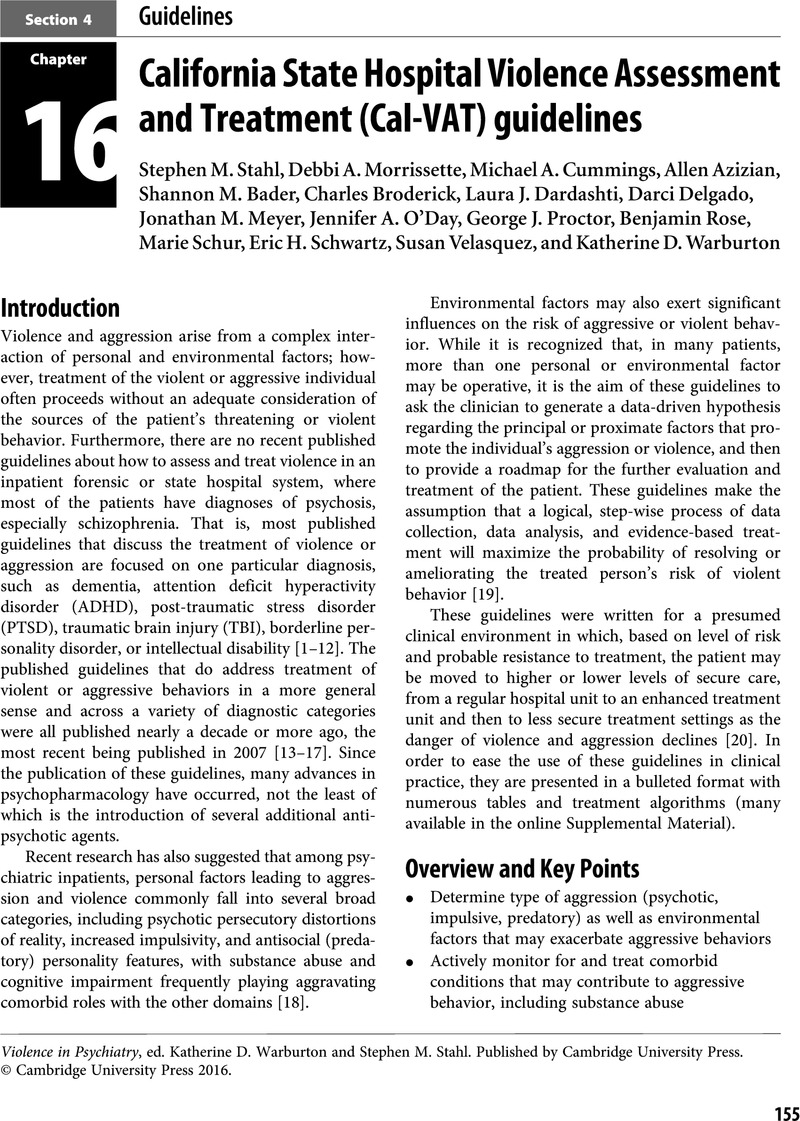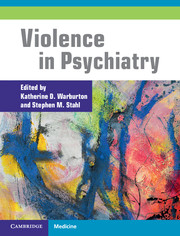Book contents
- Violence in Psychiatry
- Violence in Psychiatry
- Copyright page
- Contents
- Contributors
- Section 1 Statement of the problem
- Section 2 Assessment
- Section 3 Neurobiology
- Section 4 Guidelines
- Chapter 16 California State Hospital Violence Assessment and Treatment (Cal-VAT) guidelines
- Section 5 Psychopharmacology
- Section 6 Treatment interventions
- Index
- References
Chapter 16 - California State Hospital Violence Assessment and Treatment (Cal-VAT) guidelines
from Section 4 - Guidelines
Published online by Cambridge University Press: 19 October 2021
- Violence in Psychiatry
- Violence in Psychiatry
- Copyright page
- Contents
- Contributors
- Section 1 Statement of the problem
- Section 2 Assessment
- Section 3 Neurobiology
- Section 4 Guidelines
- Chapter 16 California State Hospital Violence Assessment and Treatment (Cal-VAT) guidelines
- Section 5 Psychopharmacology
- Section 6 Treatment interventions
- Index
- References
Summary

- Type
- Chapter
- Information
- Violence in Psychiatry , pp. 155 - 176Publisher: Cambridge University PressPrint publication year: 2016



